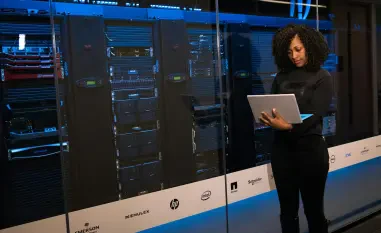In an era where digital transformation drives industrial success, the automotive sector faces an alarming threat that can cripple even the mightiest players, as demonstrated by Jaguar Land Rover (JLR), the UK’s largest carmaker and a subsidiary of India’s Tata Motors. JLR reported a staggering £485 million ($639 million) loss in the second quarter of this year, a sharp reversal from a £398 million ($524 million) profit in the prior year. This financial blow, significantly fueled by a ransomware attack in September costing £196 million ($258 million) in direct cyber expenses, underscores a critical vulnerability in the market. This analysis delves into the implications of this cyber catastrophe for the automotive industry, examining current trends in cybersecurity risks, the economic ripple effects, and projections for how such incidents could reshape market dynamics. The purpose is to highlight the urgent need for strategic resilience in a sector increasingly tethered to digital systems.
Market Context: Rising Cyber Threats in Automotive Manufacturing
The automotive industry stands at a precarious intersection of innovation and risk, with digital integration exposing manufacturers to unprecedented cyber threats. JLR, known for luxury brands and operating three major UK plants, exemplifies the sector’s reliance on interconnected systems for production, logistics, and supply chain management. Over recent years, ransomware attacks have escalated, targeting vulnerabilities in IT and operational technology, often halting entire production lines. Groups like Scattered Lapsus$ Hunters, linked to breaches at major firms such as M&S and the Co-op Group, have demonstrated the sophistication and scale of these threats. This growing menace sets a troubling backdrop for understanding why a single attack could derail a titan like JLR, pushing the market to confront cybersecurity not as an IT issue but as a core business risk.
The financial impact of such incidents extends beyond individual companies, reflecting a broader market trend of escalating costs tied to cybercrime. Industry data suggests that ransomware-related losses in manufacturing have surged, with direct costs often compounded by indirect hits to revenue and reputation. For JLR, the £485 million loss this quarter, coupled with a 24% revenue drop to £4.9 billion ($6.5 billion), illustrates how cyber incidents exacerbate existing pressures like US tariffs and product transitions. This convergence of challenges signals a market environment where digital security lapses can amplify economic vulnerabilities, urging stakeholders to reassess risk exposure across the sector.
In-Depth Analysis: Dissecting JLR’s Cyber-Attack and Market Implications
Operational Disruptions: A Domino Effect on Production
The September ransomware attack on JLR brought production to a standstill across all UK facilities for weeks, revealing the fragility of highly automated manufacturing systems. This halt not only impacted JLR’s output but also disrupted an intricate network of suppliers and partners, stalling the flow of components critical to assembly. The direct cyber costs of £196 million (8 million) likely covered incident response, forensic analysis, legal support, and communication efforts, though a detailed breakdown remains undisclosed. Such operational setbacks highlight a market trend where downtime translates into immediate revenue loss, pushing automotive firms to prioritize rapid recovery mechanisms in their operational strategies.
Beyond the immediate production freeze, the attack exposed systemic dependencies within the industry’s supply chain. With thousands of interconnected entities affected, the incident underscores how a single breach can cascade through the market, disrupting not just one company but an entire ecosystem. This trend of interconnected risk suggests that manufacturers must invest in securing not only their own systems but also those of their partners, as the weakest link can become a gateway for catastrophic disruptions. The market now faces the challenge of balancing efficiency-driven integration with robust protective measures to mitigate such widespread impacts.
Economic Fallout: A Historic Blow to the UK Market
The economic consequences of JLR’s cyber-attack reverberated far beyond corporate ledgers, marking it as the most damaging cyber event in UK history according to the Cyber Monitoring Centre (CMC). With an estimated financial toll of £1.9 billion ($2.5 billion), the incident affected over 5,000 UK organizations tied to JLR’s supply chain, primarily through lost manufacturing output. This staggering figure reflects a market reality where cyber incidents can destabilize regional economies, highlighting the automotive sector’s critical role in national industrial health and the urgent need for systemic safeguards.
To address the cash flow crises faced by suppliers, JLR implemented a loan-backed financing scheme, supported by government-guaranteed loans of up to £1.5 billion. This response, while a necessary buffer, points to a broader market implication: the cost of recovery often requires public-private collaboration, adding layers of complexity to financial planning. As cyber-attacks increasingly impact entire economic networks, the market must adapt by integrating contingency funding and government partnerships into risk management frameworks, ensuring that such historic losses do not become a recurring burden.
Emerging Trends: Underestimating Cyber Sophistication
A deeper market analysis reveals that the automotive sector often underestimates the evolving sophistication of cyber threats, a misstep that proved costly for JLR. Unlike tech-centric industries, manufacturers grapple with securing legacy systems and operational technologies ill-equipped for modern ransomware tactics deployed by groups like Scattered Lapsus$ Hunters. This gap in preparedness reflects a market-wide trend where traditional cybersecurity approaches fail to address the unique challenges of industrial environments, leaving firms exposed to precision-targeted attacks.
Furthermore, global disparities in cybersecurity regulations create uneven risk landscapes for multinational players like JLR. Operating across jurisdictions with varying standards can result in inconsistent defenses, amplifying vulnerabilities in an already complex market. This trend suggests that the industry must move toward harmonized regulatory frameworks and tailored cybersecurity strategies that account for both digital and physical production risks. Without such adaptations, the market remains susceptible to repeated incidents that could erode investor confidence and operational stability over time.
Future Projections: Cybersecurity as a Market Differentiator
Looking ahead, the JLR incident signals a transformative shift in the automotive market, where cybersecurity could emerge as a competitive differentiator. Projections indicate that cyber-related losses in the sector could reach billions annually by 2030 if current trends persist, driving urgent investments in AI-powered threat detection and zero-trust architectures. These technological advancements, alongside secure cloud solutions for supply chain coordination, are expected to become standard as manufacturers seek to prevent disruptions on the scale of JLR’s experience, reshaping market expectations for operational resilience.
Economic and regulatory forecasts also point to tighter data protection laws and potential government mandates for cyber readiness, which could impose compliance costs on manufacturers already navigating financial strain. Market analysis suggests that firms adopting proactive cybersecurity measures will likely gain a strategic edge, attracting partnerships and consumer trust in an environment increasingly wary of digital risks. Over the next few years, from this year to 2027, the automotive sector is poised to witness a surge in cyber insurance adoption and collaborative defense initiatives, as companies recognize the cost of inaction far outweighs the investment in prevention.
Shifting market dynamics will also push manufacturers to integrate cyber resilience into their core business models, rather than treating it as an ancillary concern. Industry insights predict that firms failing to prioritize digital security may face declining market share, as stakeholders gravitate toward brands demonstrating robust safeguards. For JLR and its peers, the coming years offer an opportunity to redefine market positioning through comprehensive cybersecurity strategies, ensuring that digital threats do not dictate financial outcomes or competitive standing.
Reflecting on the Past: Strategic Pathways Forward
Looking back, the £485 million loss suffered by JLR in the second quarter marked a pivotal moment for the automotive market, exposing deep-seated vulnerabilities to cyber threats. The economic toll of £1.9 billion across the UK underscored how interconnected industries amplified the impact of a single breach, while operational halts revealed the fragility of digital-dependent production systems. This historic event served as a stark warning that cybersecurity lapses could unravel years of market progress in mere weeks.
Moving forward, strategic pathways emerged from this crisis, offering actionable steps for market players. Automotive firms were encouraged to conduct rigorous vulnerability assessments and deploy real-time threat monitoring tools to preempt attacks. Strengthening supply chain security through shared defense protocols became a priority, ensuring that no single weak point could jeopardize the broader network. Additionally, fostering partnerships with government bodies and cybersecurity experts was seen as essential to accelerate response capabilities and shape supportive policies.
Ultimately, the aftermath of JLR’s ransomware ordeal highlighted the need for a cultural shift within the market, where digital resilience became embedded in every facet of operations. Industry stakeholders recognized that investing in employee training and public awareness could fortify defenses against evolving threats. As the sector moved beyond this setback, the focus shifted to building a fortified future, where preparedness and innovation stood as the bedrock against an ever-looming digital battleground.













